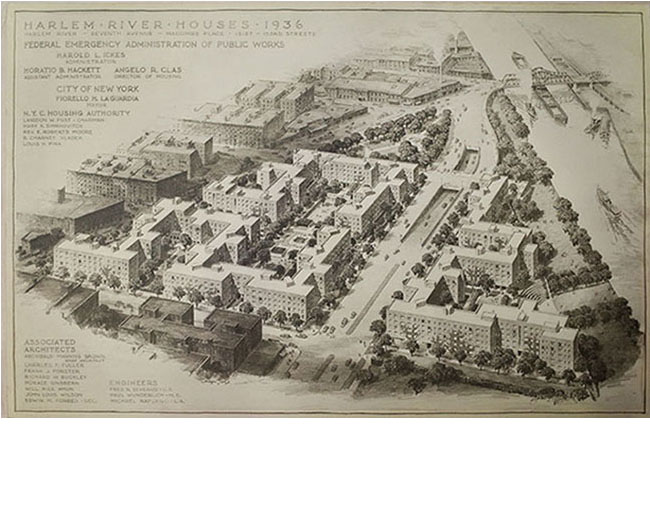Living in America: Frank Lloyd Wright, Harlem, and Modern Housing

“Living in America,” part of a manifesto that was written on wooden panels traveling with the model of Frank Lloyd Wright’s Broadacre City (1929–58), evokes a question that preoccupied architects and planners throughout the mid-twentieth century. Wright’s idealized plan for an exurban settlement of single-family homes offered one possible answer; plans for large public or subsidized housing located in urban areas presented another. Although these two visions seem a world apart, they share a common history.
Wright (1867–1959) first exhibited his Broadacre City project at Rockefeller Center in midtown Manhattan in 1935. While the prominent, Wisconsin-based architect anticipated a degree of economic diversity, Broadacre’s residents were, for the most part, implicitly white. In 1936 construction began on one of New York City’s first public housing developments, the Harlem River Houses, funded by the Public Works Administration under President Franklin D. Roosevelt’s New Deal.
Built for working-class African Americans, the complex was designed by a consortium including John Louis Wilson, Jr., the first African American to graduate from Columbia University’s School of Architecture. Through such parallel examples, this exhibition tells a story of segregation, inequality, and aspiration––a story as old as the country itself, and one that continues to pose the question, “How to live in America, together?”
For more information about the event, please click here.
September 9, 2017 – December 17, 2017
Miriam and Ira D. Wallach Art Gallery
Columbia University
926 Schermerhorn Hall
1190 Amsterdam Ave. MC 5502
New York, NY 10027
Hours
Wednesday – Friday, 12–8 pm; Saturday and Sunday, 12–6 pm

February 17, 2022 at 9:37 am, 3aristocrat said:
1immensity